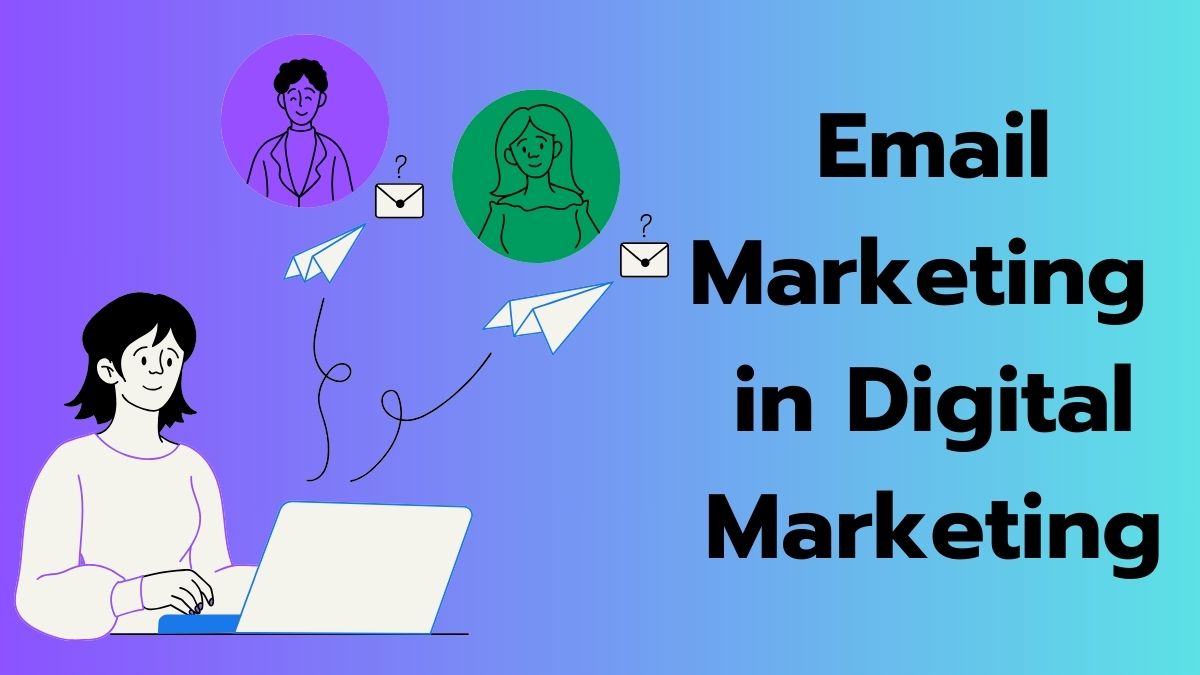Email Marketing in Digital Marketing: Email marketing remains one of the most powerful tools in the digital marketing arsenal. Despite the rise of social media and other communication channels, email continues to deliver impressive returns on investment (ROI) and is an effective way to build and maintain relationships with your audience. In this article, we’ll explore the importance of email marketing, how to get started, and best practices for success.
Email Marketing in Digital Marketing

Why Email Marketing Matters
- Direct Communication: Email allows you to reach your audience directly in their inbox, providing a personal touch that other channels may lack. This direct line of communication helps build trust and loyalty.
- High ROI: According to various studies, email marketing can yield an ROI of up to $42 for every dollar spent. This makes it one of the most cost-effective marketing strategies available.
- Measurable Results: With email marketing, you can track metrics such as open rates, click-through rates, and conversions. This data helps you understand what’s working and what needs improvement.
- Customization and Segmentation: Email marketing allows for high levels of personalization and segmentation. You can tailor your messages to specific audience segments based on their behaviors, preferences, and demographics.
Getting Started with Email Marketing
- Build Your Email List: The first step is to build a robust email list. Offer value to your visitors in exchange for their email addresses. This could be a free eBook, a discount code, or access to exclusive content.
- Choose an Email Marketing Service: There are many email marketing services available, such as Mailchimp, Constant Contact, and Sendinblue. These platforms offer tools for designing emails, managing your list, and analyzing performance.
- Design Your Emails: Your emails should be visually appealing and mobile-friendly. Most email marketing services offer drag-and-drop editors and customizable templates to make this process easier.
- Create Valuable Content: The content of your emails should provide value to your subscribers. This could be informative articles, promotional offers, product updates, or personalized recommendations.
Best Practices for Email Marketing Success
- Craft Compelling Subject Lines: Your subject line is the first thing recipients see, and it plays a crucial role in whether they open your email. Make it clear, concise, and intriguing. Personalization, such as including the recipient’s name, can also boost open rates.
- Personalize Your Emails: Personalization goes beyond using the recipient’s name. Segment your email list based on factors like purchase history, browsing behavior, and demographics to send more relevant content.
- Optimize for Mobile: A significant portion of emails are opened on mobile devices. Ensure your emails are mobile-friendly by using responsive design, concise content, and easily tappable links and buttons.
- Include Clear Calls to Action (CTAs): Every email should have a clear purpose and a call to action. Whether it’s visiting your website, making a purchase, or downloading a resource, make sure your CTA stands out and is easy to follow.
- Test and Optimize: Regularly test different elements of your emails, such as subject lines, content, and CTAs. A/B testing can help you determine what resonates best with your audience. Use the insights gained to continually optimize your campaigns.
- Maintain a Consistent Schedule: Consistency is key in email marketing. Decide on a frequency that works for your audience, whether it’s weekly, bi-weekly, or monthly, and stick to it. This helps keep your brand top of mind without overwhelming your subscribers.
- Comply with Legal Requirements: Ensure your email marketing practices comply with regulations such as the CAN-SPAM Act in the US or GDPR in Europe. This includes providing an easy way for recipients to unsubscribe and honoring those requests promptly.
Types of Email Campaigns
- Welcome Emails: Introduce new subscribers to your brand with a warm welcome email. This is an opportunity to set expectations and provide useful information about your products or services.
- Newsletters: Regular newsletters keep your audience informed about company news, industry updates, and other valuable content. They help maintain engagement and build a long-term relationship.
- Promotional Emails: These emails highlight sales, discounts, or special offers. Use urgency and scarcity tactics, such as limited-time offers, to encourage quick action.
- Abandoned Cart Emails: Remind customers who have left items in their shopping cart to complete their purchase. These emails can include incentives like discounts or free shipping to entice them to finalize their order.
- Re-engagement Emails: If some of your subscribers have become inactive, send re-engagement emails to win them back. Offer incentives or ask for feedback to understand why they’ve disengaged.
Conclusion
Email marketing is a cornerstone of digital marketing, offering direct, personalized, and cost-effective communication with your audience. By building a strong email list, creating valuable content, and following best practices, you can harness the power of email marketing to drive engagement, boost sales, and build lasting relationships with your customers.
The 7 Steps of a Marketing Plan: A Guide for Success
Remember, the key to successful email marketing lies in understanding your audience, delivering relevant and valuable content, and continuously optimizing your campaigns based on performance data. Start building your email marketing strategy today and watch your business grow.

Pingback: iDigitalpreneur How to earn money, Courses, Packages, idigitalpreneur is Safe Company - Rank Web Tools